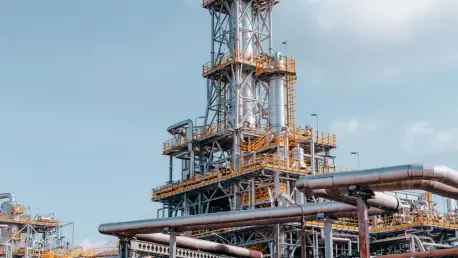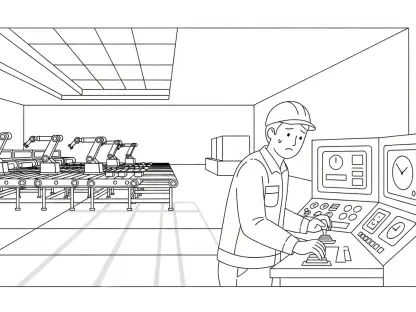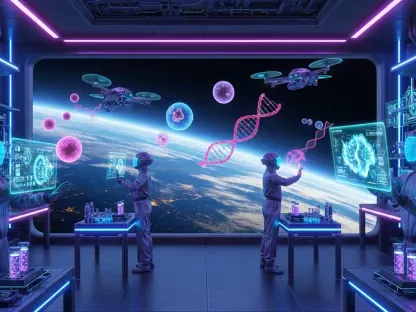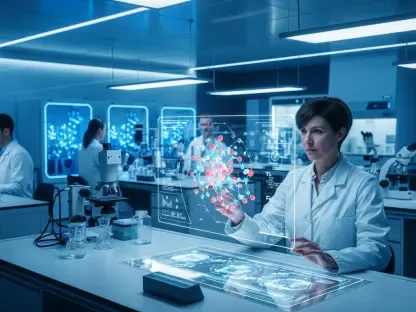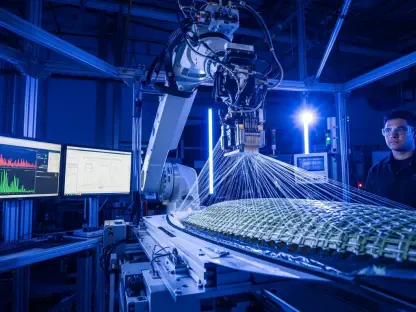In the rapidly evolving landscape of modern industry, the role of Artificial Intelligence (AI) in chemical manufacturing stands out as a beacon of innovation and progress. This intersection of technology and industry has increasingly gained traction, redefining traditional methods and prompting a thorough reassessment of established processes. What was once considered a distant dream has now materialized into practical applications that enhance productivity, optimize resources, and propel the manufacturing sector into a new era of efficiency and creativity. As industries grapple with global challenges such as sustainability and resource scarcity, AI emerges not as a luxury but as a pivotal strategic tool, crucial for not only survival but thriving in an intensely competitive environment. Understanding the breadth and depth of AI’s applications in chemical manufacturing requires a nuanced appreciation of its historical journey, its fundamental technological underpinnings, and its current and potential future influence.
Historical Evolution and Perceptions of AI in Manufacturing
Tracing the historical trajectory of AI within chemical manufacturing reveals a complex narrative of innovation punctuated by periods of skepticism and resurgence. The genesis of AI can be linked to early computational developments in the 17th century, such as Blaise Pascal’s innovations and Charles Babbage’s mechanical computers. These foundational technologies laid critical groundwork, fostering conditions conducive to AI’s evolution. As the 20th century unfolded, milestones like Alan Turing’s exploration of machine thought raised public curiosity regarding AI’s potential. The Turing Test, formulated to discern machine intelligence, became a benchmark for evaluating AI systems. However, AI’s journey was not seamless; fluctuating interest often resulted in extended periods of dormancy known as “AI Winters,” where technological promises seemed unfulfilled. Yet, key achievements, notably IBM’s Deep Blue and Watson, sparked renewed intrigue, dispelling doubts and solidifying AI’s growing importance in tackling complex tasks that defied human capacity, reshaping industry expectations.
These technological breakthroughs were instrumental in altering misconceptions about AI, transitioning the perspective from speculative and futuristic to feasible and practical. As AI tools matured, expectations shifted in tandem, moving beyond mere theoretical potential to real-world applications, exemplified by today’s sophisticated AI models. Modern AI systems excel at processing vast datasets, enabling them to uncover insights and trends previously hidden. This transformation, driven by persistent innovation, fuels the industry’s capacity to harness AI as a strategic ally enhancing operations, decision-making, and competitive edge. This historical context underscores that AI’s trajectory in chemical manufacturing is a testament to the enduring human pursuit of synthesized intelligence and efficiency, catalyzing advancements that reverberate through every facet of the industry today.
Contemporary Applications and Technological Integration
In today’s environment, AI technologies are intricately woven into the chemical manufacturing sector, addressing multifaceted challenges through diverse applications. One prominent utilization involves optimizing supply chains, where AI algorithms analyze logistical data to improve efficiency, lower costs, and mitigate disruptions. Leveraging predictive analytics, these systems anticipate future demands and adjust operations proactively. Additionally, AI enhances production processes by facilitating predictive maintenance—an approach that leverages data from machinery to forecast potential breakdowns, thus reducing downtime and extending equipment lifespan. This proactive maintenance not only preserves operational continuity but also enhances safety, ensuring compliance with rigorous industry standards while preventing costly industrial incidents.
Moreover, AI plays an instrumental role in innovating new compounds and materials, utilizing machine learning models to simulate chemical reactions and predict outcomes, dramatically reducing the timeline from concept to market-ready product. The environmental dimension of chemical manufacturing also benefits from AI’s integration. Systems are now designed to minimize waste and energy consumption, aligning operations with sustainability objectives and regulatory requirements. As industries increasingly prioritize ecological sustainability, the capacity to efficiently manage resources and lower carbon footprints becomes paramount, positioning AI as a significant contributor to these green initiatives. Overall, AI’s incorporation into chemical manufacturing not only elevates operational competencies but also drives a broader transformation towards more adaptable, resilient, and environmentally conscious industrial practices.
Future Trends and Strategic Implications
The future trajectory of AI in chemical manufacturing is poised for exponential growth as emerging technologies and evolving industry needs redefine operational paradigms. As AI systems become more sophisticated, their applications in managing increasingly complex manufacturing networks expand, offering unprecedented levels of automation and insight. This evolution is propelled by continual advancements in AI technologies, such as deep learning and neural networks, which unlock new possibilities for data analysis and automation previously unattainable. The persistent rise of AI reflects an industry-wide recognition of its transformative potential, fostering greater investments in research and development to refine AI capabilities and expand their reach within chemical processes.
As the integration of AI continues to accelerate, it is essential for organizations to develop robust strategic frameworks that align with these advancements. This involves prioritizing adaptive infrastructure and cultivating a tech-savvy workforce capable of leveraging AI tools effectively in real-world scenarios. Training and development play a critical role in ensuring that personnel can seamlessly incorporate AI-driven insights into decision-making, enhancing operational efficiency and driving innovation. Long-term, companies that prioritize the strategic deployment of AI technologies will likely gain a competitive edge, benefiting from the increased adaptability required to navigate the volatile dynamics of the global manufacturing sector. As AI solidifies its role as a cornerstone of modern manufacturing, its ability to redefine standards, optimize resource utilization, and guide the industry into a more sustainable, efficient future becomes increasingly indispensable.
Reflecting on AI’s Transformative Impact
In today’s fast-changing industrial landscape, Artificial Intelligence (AI) advances chemical manufacturing as a symbol of innovation and progress. This merger of technology with industry has gained significant momentum, revolutionizing traditional practices and demanding a comprehensive reevaluation of conventional processes. What once seemed a far-off ambition has now become tangible through practical applications, boosting productivity, optimizing resources, and propelling the manufacturing sector toward a new era marked by efficiency and creativity. The need for sustainability and managing resource scarcity has made AI indispensable, not just as an optional upgrade but as a critical strategic asset for success in a fiercely competitive environment. To fully comprehend AI’s transformative role in chemical manufacturing, one must explore its historical evolution, technological foundations, and both its current and potential future impacts. AI has turned into a core element that promises not only resilience but growth in the face of global challenges.
